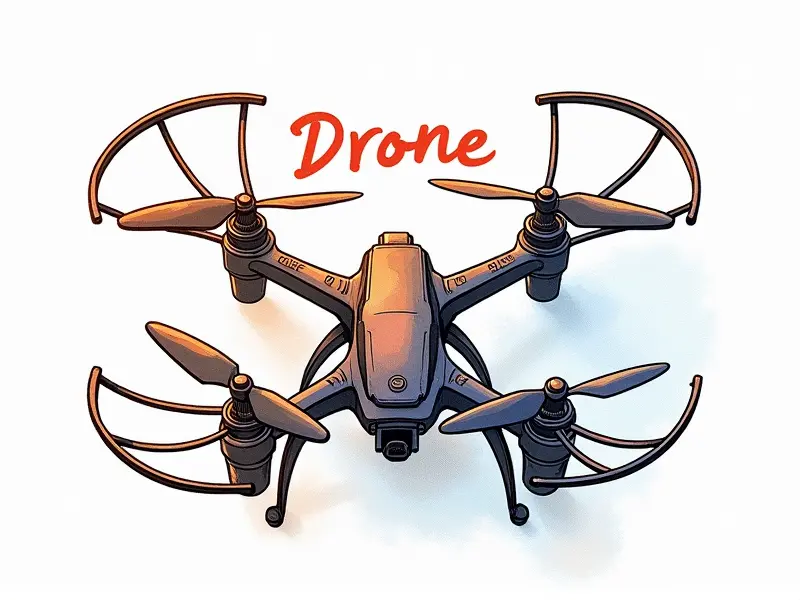How does RC flying work?

Remote Control (RC) flying is an exhilarating hobby that combines the thrill of flight with the precision and skill required to control aircraft from the ground. Whether you're interested in traditional fixed-wing airplanes, helicopters, or modern quadcopters, understanding how RC flying works can open up a world of possibilities for your aviation adventures.
Understanding RC Flying Basics
To grasp the fundamentals of RC flying, it's essential to understand the basic components and principles involved. An RC aircraft consists of several key parts:
- Radio Transmitter: The transmitter is your primary control device, sending signals to the receiver in the aircraft.
- Receiver: This component receives signals from the transmitter and relays them to the servos or electronic speed controller (ESC).
- Servos/ESC: Servos control the movable parts of the airplane, such as ailerons, elevators, rudder, and throttle. An ESC controls the motor's speed in electric-powered aircraft.
The flight dynamics of RC aircraft are similar to full-scale airplanes but scaled down for smaller models. Understanding aerodynamics, including lift, thrust, drag, and weight, is crucial for successful flying.
RC Flight Controls Explained
Mastery over the controls is key to becoming a proficient RC pilot. Here’s an overview of the primary flight control surfaces:
- Ailerons: Control roll by moving in opposite directions, allowing for banking and turning.
- Elevators: Control pitch (up and down movement) by adjusting the angle of attack.
- Rudder: Controls yaw (left and right turns).
In addition to these, throttle control manages engine speed or motor power in electric models. Proper coordination between all controls is essential for smooth flight operations.
Getting Started with RC Aircraft
Choosing the right aircraft as a beginner can be daunting. Fixed-wing planes are generally easier to fly due to their stability and slower speeds, making them ideal for learning basic maneuvers like takeoff, landing, and turns.
- Selecting Your First Plane: Opt for an RTF (Ready-to-Fly) model that comes with everything you need out of the box. Start with a trainer plane designed specifically for beginners.
- Finding a Suitable Field: Look for open spaces like parks or designated RC flying fields where you can practice safely without interference from other activities.
Mastering RC Airplane Control
Becoming proficient in controlling an RC airplane requires patience and consistent practice. Here are some tips to help you improve:
- Practice Takeoffs and Landings: These are critical skills that require precision and control.
- Learn Basic Maneuvers: Start with simple maneuvers like straight flight, turns, and stalls before moving on to more complex ones.
Joining a local RC club can provide valuable guidance from experienced pilots who can offer tips and advice based on their own experiences.
RC Helicopter Flight Techniques
Helicopters present unique challenges due to their vertical takeoff, hovering capabilities, and complex control systems. Key techniques include:
- Main Rotor Control: The main rotor controls lift and forward/backward movement.
- Tail Rotor Control: Manages yaw (left/right turns).
Mastery of these techniques requires dedicated practice, often starting with simulators before moving to actual models. Understanding the mechanics behind helicopter flight is crucial for safe and effective operation.
Quadcopter Flight Dynamics Simplified
Quadcopters are popular due to their stability and ease of control compared to traditional helicopters. They use four rotors arranged in a cross pattern, providing lift and directional movement:
- Lift Control: Adjusting the speed of all motors simultaneously controls ascent or descent.
- Movement Control: Differential motor speeds control forward/backward and left/right movements.
The simplicity of quadcopter mechanics makes them an excellent choice for beginners looking to get into RC flying quickly.
FPV Drone Basics for Beginners
Flying drones with First Person View (FPV) adds a new dimension to the hobby. FPV involves wearing goggles that display a live video feed from the drone’s camera, providing an immersive flight experience:
- Setting Up Your Gear: Ensure your transmitter and receiver are compatible for FPV transmission.
- Finding Suitable Locations: Look for open areas with minimal interference to ensure a clear signal.
FPV flying requires additional safety considerations, such as maintaining visual line of sight and adhering to local regulations.
How to Fly RC Planes Like a Pro
To elevate your skills from novice to expert, focus on advanced techniques:
- Serious Practice: Regular practice is key to mastering complex maneuvers like loops and rolls.
- Tuning Your Setup: Fine-tune your transmitter settings for optimal control response.
Engaging in competitive events or joining RC flying clubs can provide opportunities to showcase your skills and learn from others.
Essential Tips for New RC Pilots
Starting out in RC flying can be overwhelming, but these tips will help you get off the ground:
- Start Slowly: Begin with basic maneuvers before attempting more complex ones.
- Stay Safe: Always follow safety guidelines and use protective gear like helmets and goggles.
Patience and persistence are your best allies in mastering the art of RC flying.
Unveiling the Secrets of RC Helicopter Flight
Mastery over RC helicopters involves understanding their unique flight characteristics:
- Hovering Techniques: Mastering hover control is crucial for stable and precise maneuvers.
- Airborne Maneuvers: Learn to perform advanced maneuvers like flips, rolls, and loops while maintaining stability.
Regular practice and a solid understanding of helicopter mechanics will help you become proficient in RC helicopter flight.
Mastering RC Quadcopter Flight
To excel with quadcopters:
- Practice Precision Control: Focus on fine-tuning your control inputs for smooth and precise movements.
- Leverage Technology: Utilize features like GPS stabilization to enhance flight stability and precision.
Mastery of quadcopter controls will enable you to perform advanced maneuvers with ease, opening up new possibilities in RC flying.
Conclusion
RC flying is a rewarding hobby that combines skill, technology, and creativity. Whether you're starting out with airplanes or diving into the world of helicopters and drones, there's always something new to learn and master. Embrace the journey, stay safe, and enjoy the thrill of flight!

